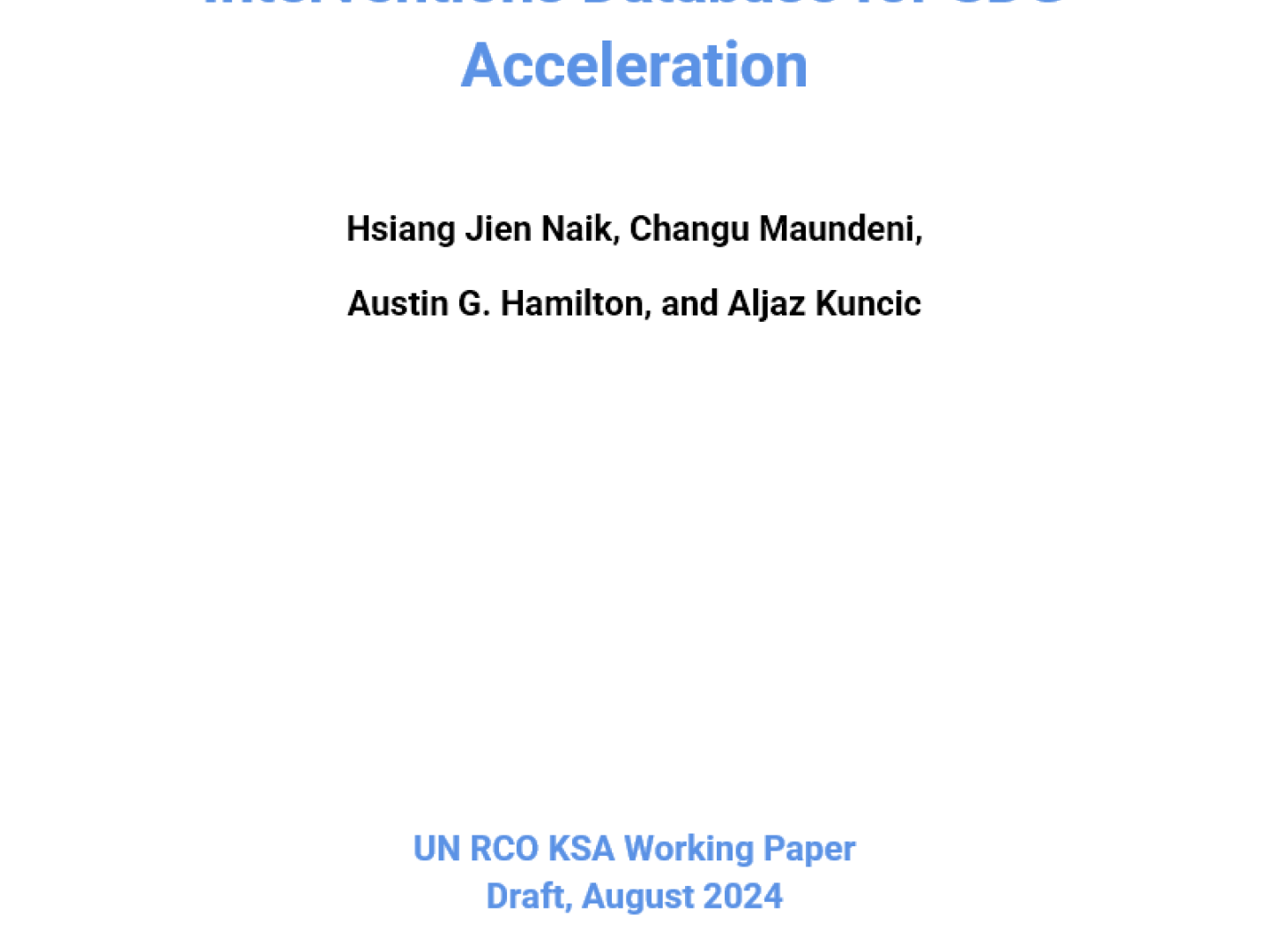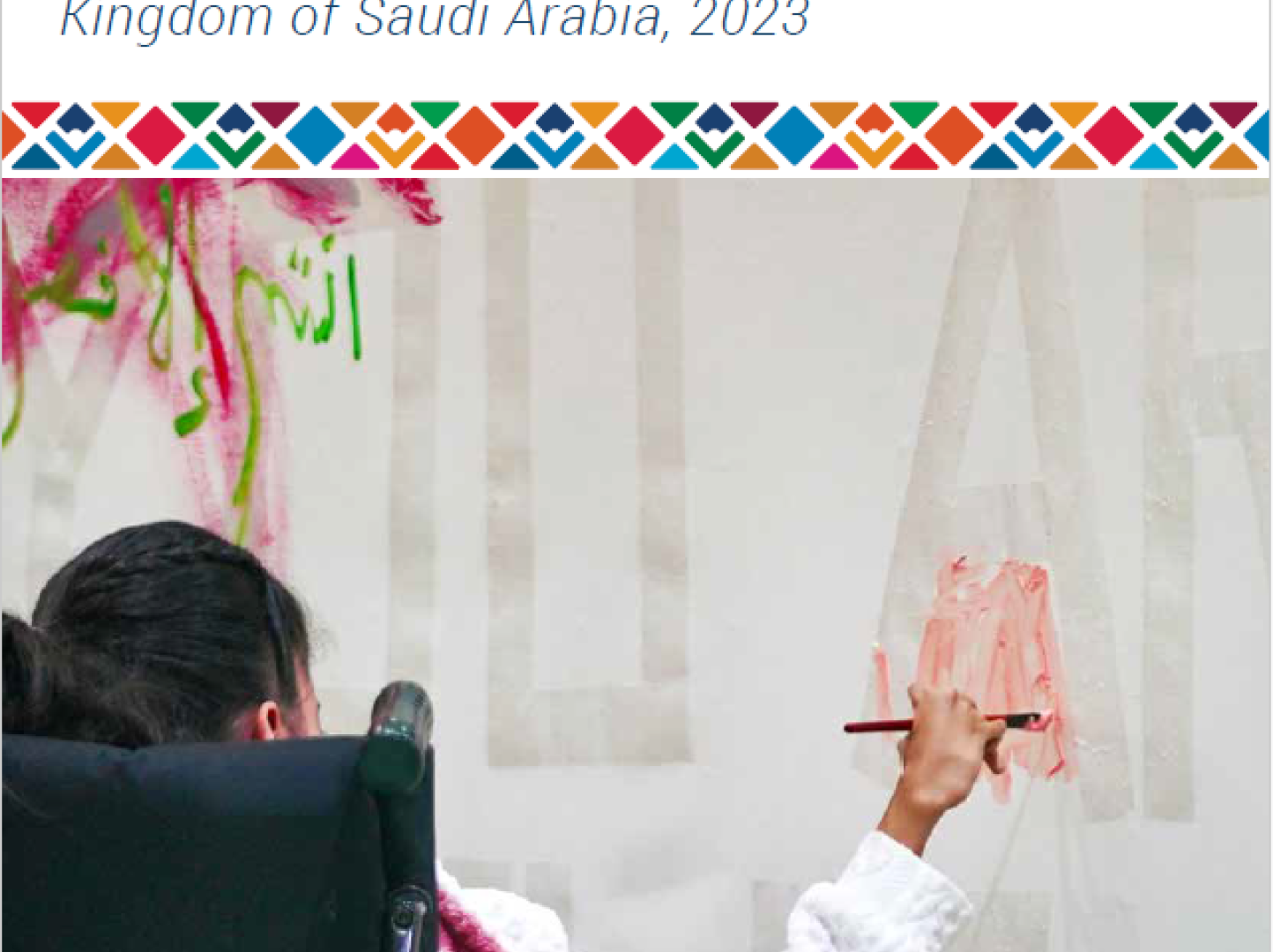RCO-UNCT Economist Toolkit (UPDATE 2.0, December 2021)
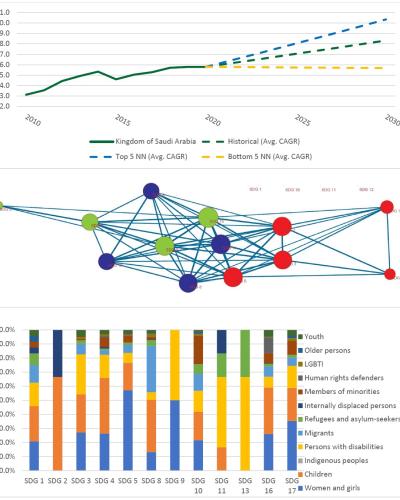
Authors: Aljaz Kuncic (kuncic@un.org) and Austin G. Hamilton (austin.g.hamilton@gmail.com)
The update includes two significant revisions to both the Macroeconomics SDG Forecasts and Quantitative Assessment of Human Rights and Vulnerable Groups. First, in addition to improvements in the methodology, the Macroeconomics SDG Forecasts are pre-calculated/generated for 193 countries, which includes identification of Nearest Neighbours SDG by SDG for all countries, average growth rates used for forecasts, and automatically built scenario/forecast charts. Second, we have also fully automated the Quantitative Assessment of Human Rights and Vulnerable Groups, which is now pre-calculated/generated for 197 countries/territories, and which includes the overview statistics and self-populated graphs on human rights recommendations and observations, the frequency of salience of vulnerable groups in those, and more slicing in relation to and within each SDG. These two improvements will make the process of integrating the two tools into almost any CCA and UNSDCF seamless.
This 2.0 Update of the Toolkit, as before (first version available at https://saudiarabia.un.org/en/127383-rco-unct-economist-toolkit), consists of three policy-oriented papers on Macroeconomics SDG Forecasts, Quantitative Assessment of Human Rights and Vulnerable Groups, and Sustainable Development Goals Interlinkages, along with the statistical code in Stata, steps to take, and data sources to use to be able to replicate the approach and results. The results are already calculated for all available countries, so the Toolkit enhances the quick result-oriented analytical capabilities of a UNCTs and governments that decide to use it. It assures a level of comparability amongst CCAs and CFs across all countries, useful for regional and global monitoring/reporting.
The research producing the Toolkit concentrates on making contributions to three areas: Macroeconomics SDG Forecasts, Sustainable Development Goals Interlinkages, and Quantitative Assessment of Human Rights and Vulnerable Groups. The specific research questions underlying all these three areas are, how can a UNCT and the government identify the most suitable areas of policy interventions for SDG acceleration, alongside a policy mix which will accelerate progress area by area, while being able to account for the integrated nature of SDGs (which have positive and negative spillovers to one another, and also form specific clusters needing comprehensive, not isolated/siloed interventions) and keep a focus on the most vulnerable groups and human rights. The additional value add is that the approach makes forecasts of macro SDG scores possible on a country level, allowing for several possible trajectories – a good policy mix trajectory, a historical country trajectory, and a bad policy mix trajectory, all based on recent experiences of other comparable countries, SDG by SDG.
There are 3 folders in the download link of the Toolkit below, which can either be explored online or downloaded as a zip file. Each folder includes the raw data, the PDF of the paper underpinning and explaining the analysis and results, and the accompanying statistical code used to develop the results, on top of the automated calculations for all countries/areas and auto-built graphs.
- Macroeconomics SDG Forecasts for 193 Countries
- Quantitative Analysis of Human Rights and Vulnerable Groups for 197 Countries
- Sustainable Development Goals Interlinkages
The results calculated for all countries/areas are available by opening the file Auto Figures.xlsx and simultaneously also the data file of the focus country.
For instance, for Albania, for auto-results on human rights and vulnerable groups, one would simultaneously open (and keep opened) the files Auto Figures.xlsx (in the root folder; …\RCO-UNCT-Economist-Toolkit\Quantitative Analysis of Human Rights and Vulnerable Groups for 197 Countries\Auto Figures.xlsx) and HR_Vuln2021_Albania.xlsx (in the folder Excel files; …\RCO-UNCT-Economist-Toolkit\Quantitative Analysis of Human Rights and Vulnerable Groups for 197 Countries\Excel Files\ HR_Vuln2021_Albania.xls), and select Albania as the focus country in the Auto Figures.xlsx, as per the image below (Note: always click "Enable Content" if prompted by Excel; the tool will not work if the file names are changed (Be careful if downloading the exact file(s) multiple times); Excel can take more than a minute to calculate everything, so be patient).
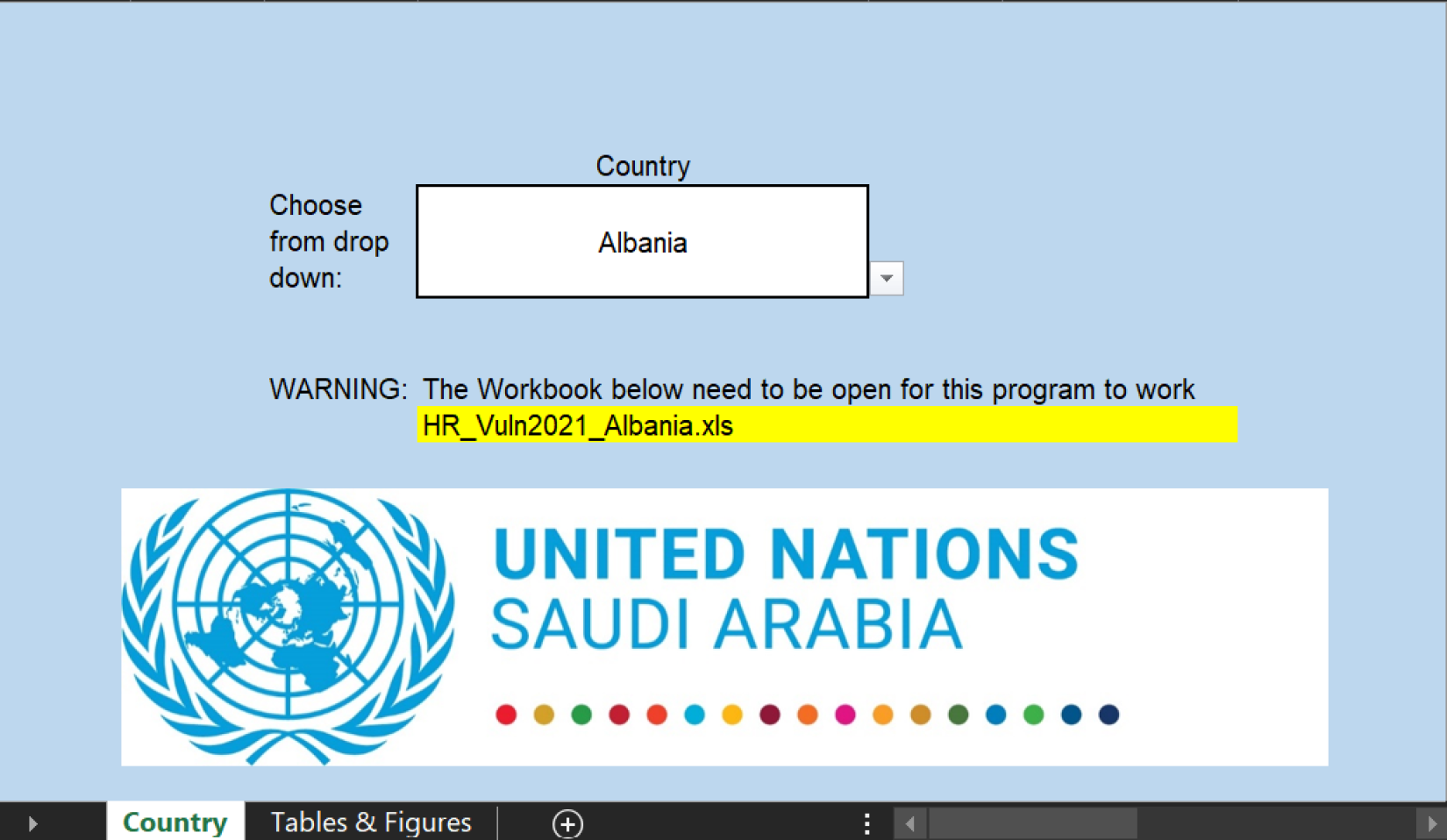
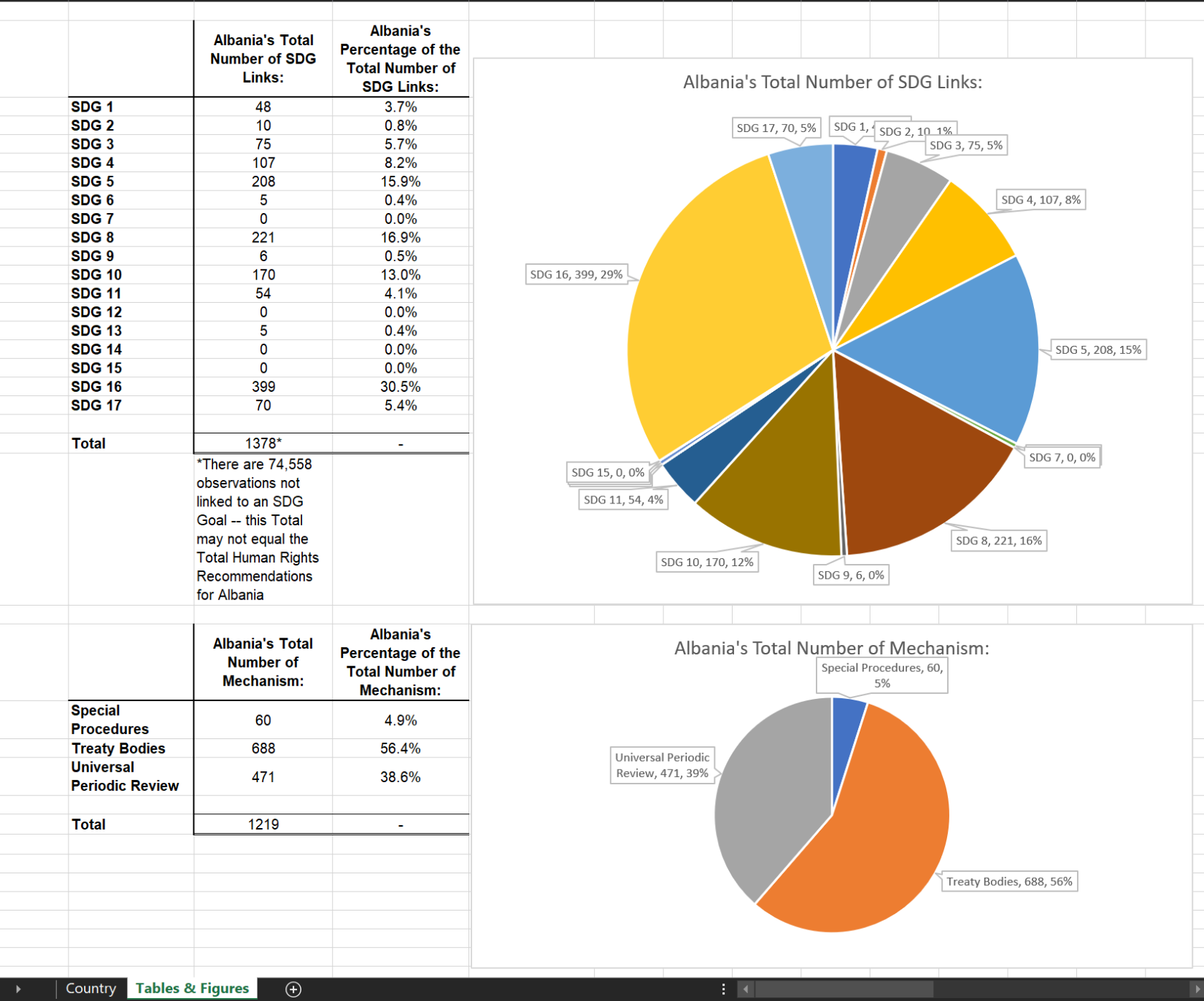
Similarly, for the Macroeconomics SDG Forecasts, for instance for Saudi Arabia, one would simultaneously open (and keep opened) the files Auto Figures.xlsx (in the root folder; …\RCO-UNCT-Economist-Toolkit\Auto Figures.xlsx) and SDR2021_SAU_NN_onlycomplete.xlsx (in the folder Only complete inside the SDR2021 Excel Files; …\RCO-UNCT-Economist-Toolkit\Macroeconomics SDG Forecasts for 193 Countries\SDR2021 Excel Files\Only Complete\SDR2021_SAU_NN_onlycomplete.xls), and select Saudi Arabia as the focus country in the Auto Figures.xlsx, as per the image below (Note: always click "Enable Content" if prompted by Excel; the tool will not work if the file names are changed (Be careful if downloading the exact file(s) multiple times); Excel can take more than a minute to calculate everything, so be patient).
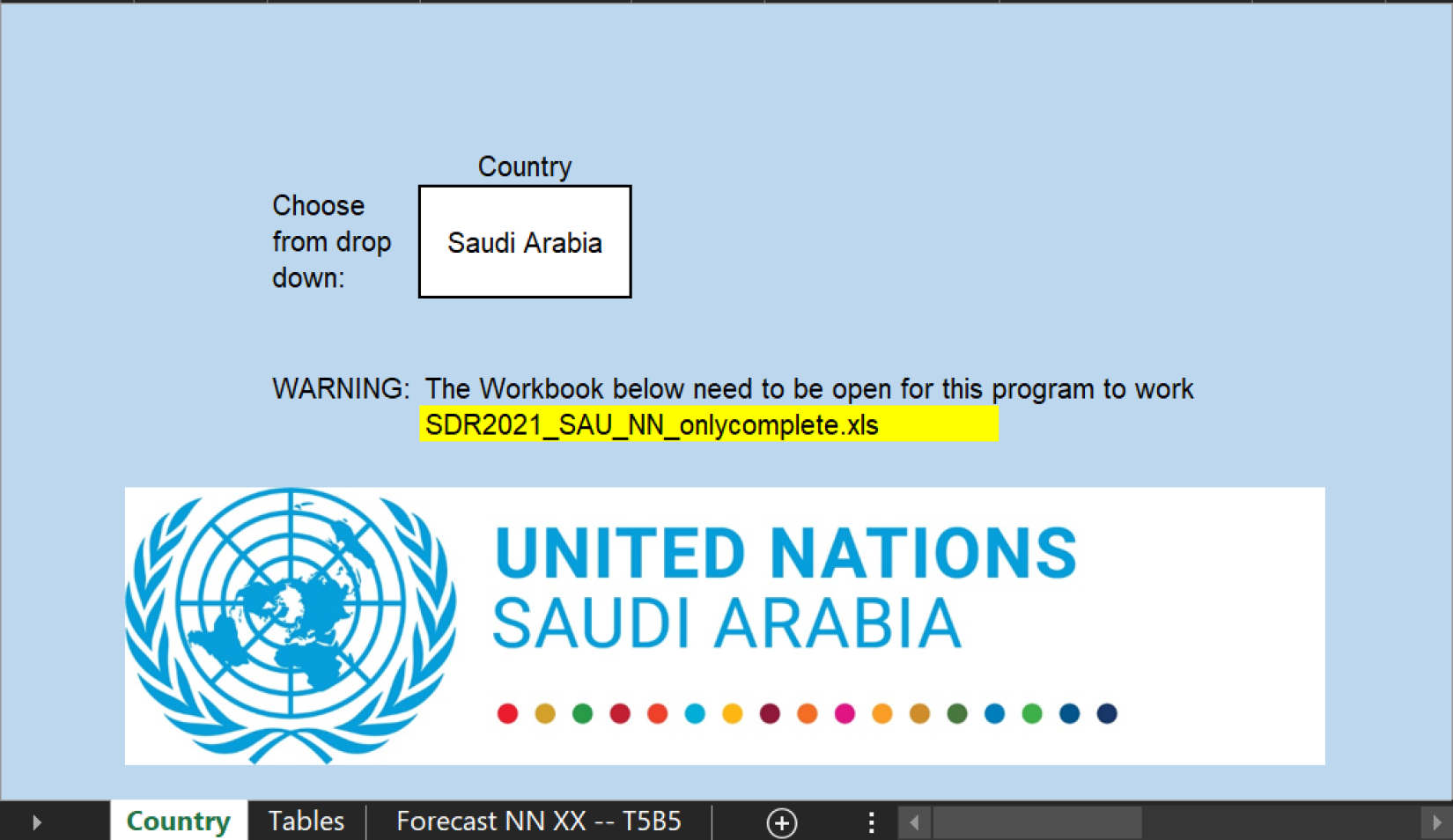
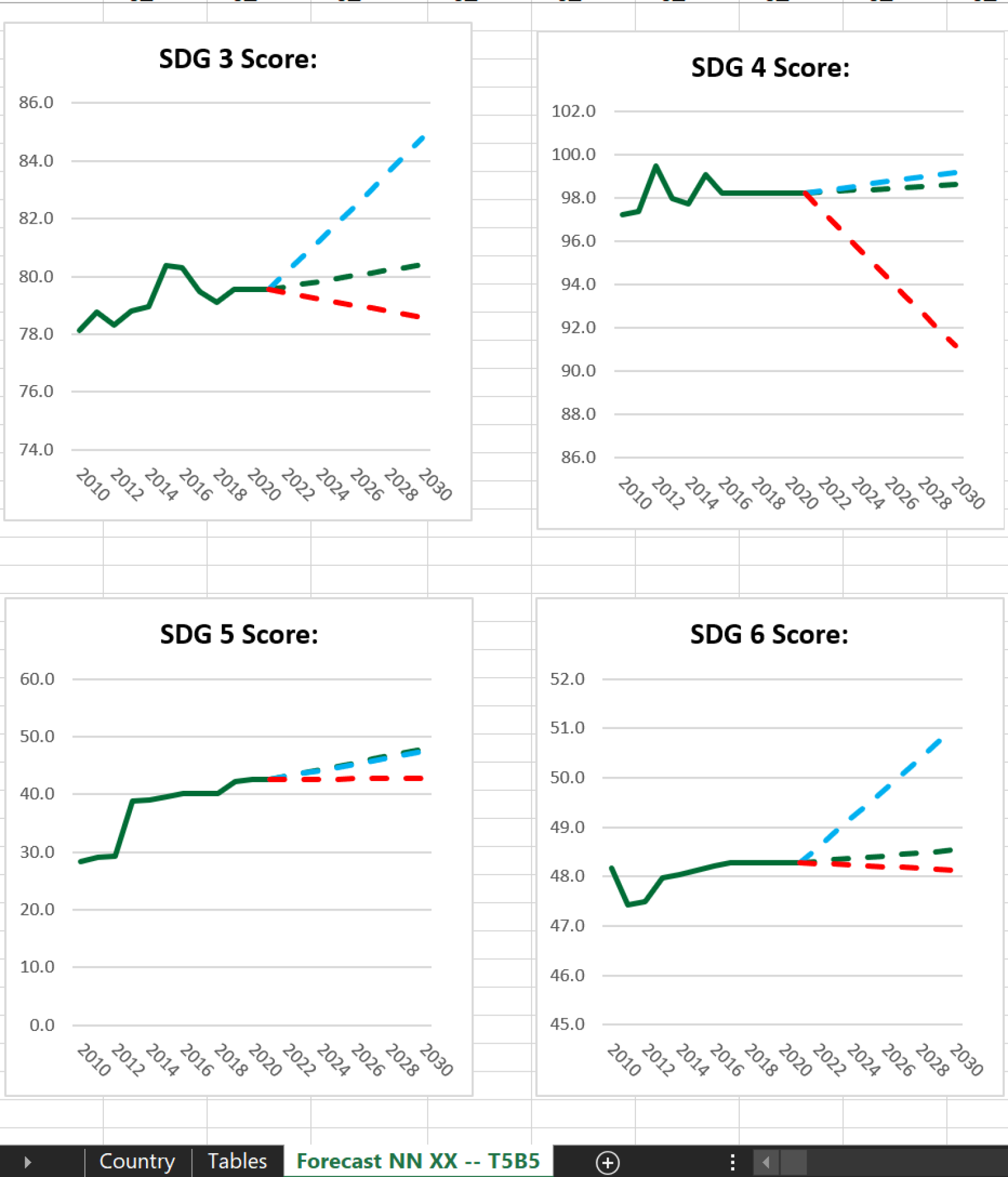
Finally, for the SDG interlinkages, nexuses, and integrated approach, the automated calculations for all countries/areas are still in the works, and we will update the Toolkit when they become available.
Click here to Download the Economist Toolkit.



















